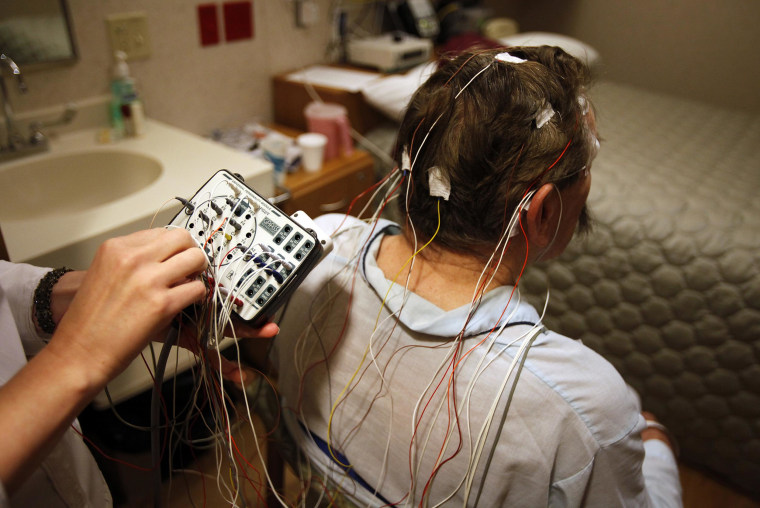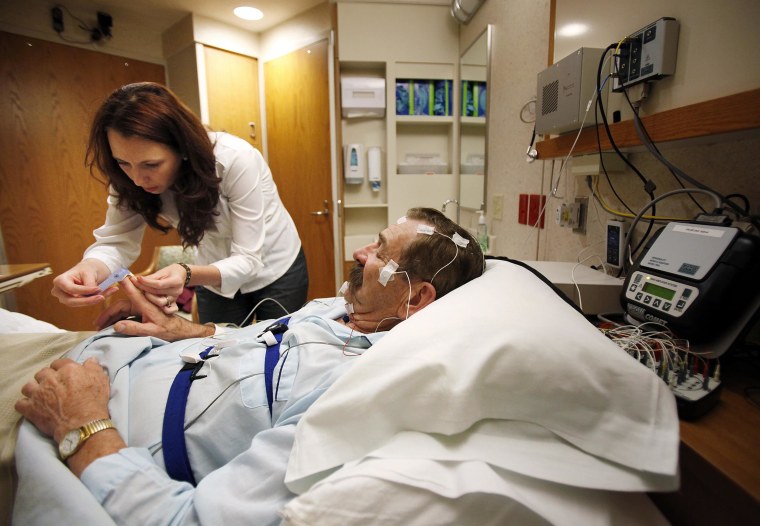
How would you like to control your dreams?
Researchers who zapped sleepers with a very gentle, targeted electrical current were able to send them into a state of lucid dreaming — when they knew they were dreaming.
They hope the technique might be used to help people with mental illnesses such as post traumatic stress disorder (PTSD) and some types of schizophrenia.
Their study, published in the journal Nature Neuroscience, also offers an opportunity to study human consciousness.
True lucid dreaming is rare and has intrigued philosophers for centuries. Experts have also thought that if people could harness it, it could be a powerful tool for therapy.
“Sometimes the dreamer gains control over the ongoing dream plot and, for example, is able to put a dream aggressor to flight,” Ursula Voss of J.W. Goethe-University Frankfurt, Germany and colleagues wrote in their report.
Voss’s team knew that brain waves change during lucid dreaming. They’re often accompanied by waves in what’s called the lower gamma frequency band — around 40 Hz. But it’s not clear which comes first — the dream, or the brain wave activity.
“Does lucid dreaming trigger gamma-band activity or does gamma-band activity trigger lucid dreaming?” they asked. “Perhaps the capacity to generate gamma-oscillatory activity sets the stage for lucid dream.”
So they got 27 young adults to volunteer for a dream study, pulsing their heads with various frequencies, from 2 Hz to 100 Hz, using a technology called frontotemporal transcranial alternating current, or tACS. Electrodes are put on the scalp to deliver the current. They also did a sham treatment.
They woke up the volunteers at various phases of sleep and asked about dreams.
Delivering 40 Hz and, to a lesser degree, 25 Hz did cause lucid dreams, they reported.
Here’s what one looked like: “I was dreaming about lemon cake. It looked translucent, but then again, it didn’t. It was a bit like in an animated movie, like the ‘Simpsons,’ ” the dreamer reported. “Then I realized ‘Oops, you are dreaming.’ I mean, while I was dreaming! So strange!”
Treatment with this kind of stimulation might be useful for some types of schizophrenia, the researchers said, or obsessive-compulsive disorder. “Finally, promoting gamma oscillations during REM (rapid eye movement) sleep in post-traumatic stress disorder with reemerging nightmares might trigger lucid dreaming and eventually enable active changes in dream content,” they said.
